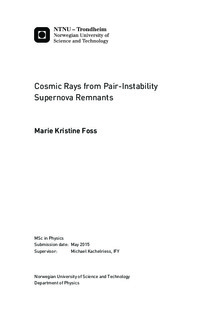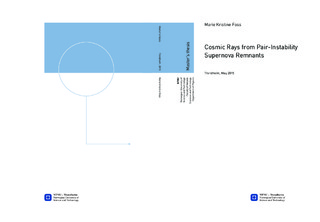| dc.description.abstract | Pair-instability supernovae are the most energetic thermonuclear explosions in the
Universe, up to 100 times more energetic than type Ia supernovae. Around redshift
z > 6 approximately one out of ten supernovae was a pair-instability supernova, in
the local universe, however, this number is drastically reduced to less than one out
of ten thousand. In this thesis we look at progenitors both among the first generation
of stars and in the local universe. We determine the dynamical evolution of the
supernova blast wave propagating through the interstellar medium. The maximum
energy a cosmic ray proton can be accelerated to in the supernova remnant is then
found to be 4e15 eV, for a mean magnetic field of 100 μG parallel to the shock
front. Lastly, the proton and neutrino flux for a Pop III pair-instability supernova
is estimated. The diffuse neutrino flux for PI SNe is found to be a sub-dominant
contribution to the observed flux. | |

